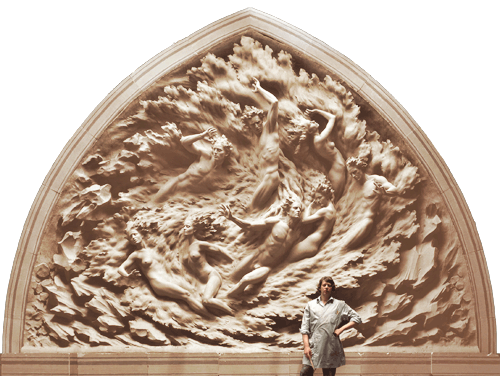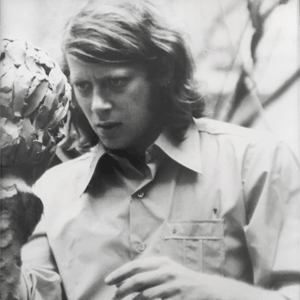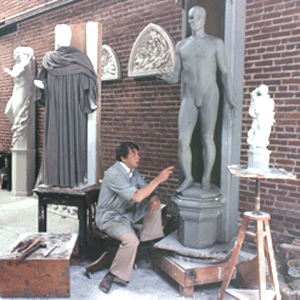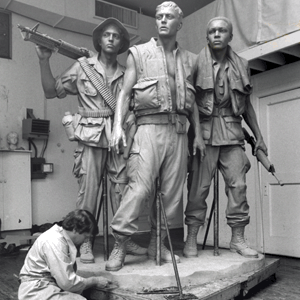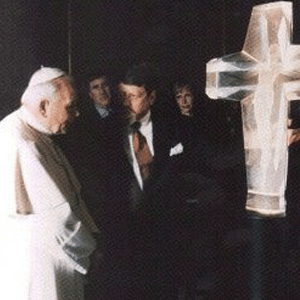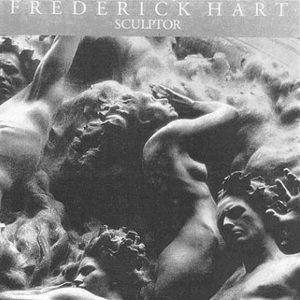Many of Hart's sculptures were cast in bronze, but as his career progressed, he focused more and more on developing an entirely new medium for sculpture, using transparent and semi-transparent acrylic materials. In these, his most distinctive sculptures, "The sculpture is defined purely by light." According to Hart, cast acrylic resin sculpture offers a "very delicate sense of image… suggestive of dreams, memories, and visions."
In 1991, Hart created and donated sculpture to benefit the Design Industries Foundation Fighting AIDS (DIFFA), and in 1993, Operation Smile International. Hart's life-size sculpture of former President Jimmy Carter was unveiled in Atlanta in 1994, and the following year he created and donated a portrait of Ruby Middleton Forsythe, honoring the African-American educator who taught in a one-room schoolhouse on Pawley's Island near Hart's mother's family home in Conway, South Carolina.
In 1997, he presented his unprecedented acrylic sculpture, The Cross of the Millennium, to Pope John Paul II, who told the sculptor, "You have created a profound theological statement for our day." Following his death in 1999, Hart was awarded the National Medal of Arts, in recognition of "his important body of work – including the Washington National Cathedral's Creation Sculptures and the Vietnam Veterans Memorial's Three Soldiers – which heralded a new age for contemporary public art."
